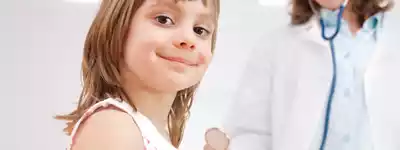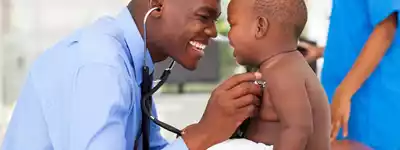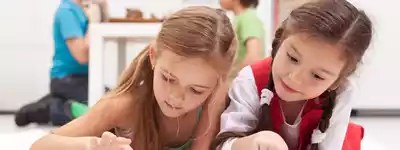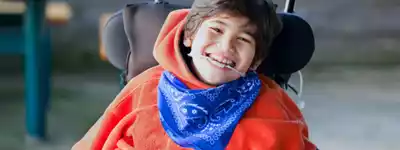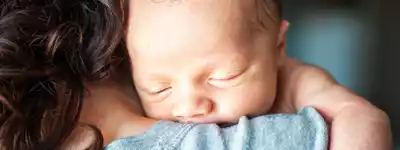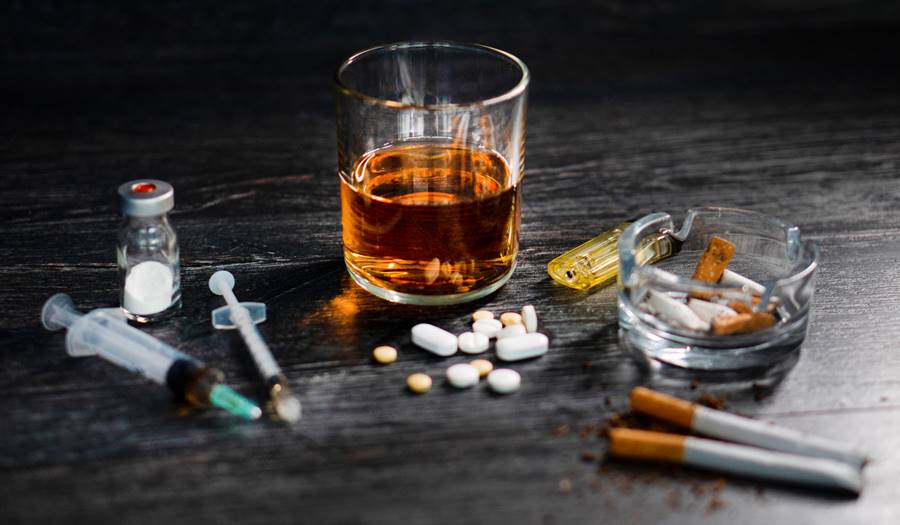
Illegal Drug Use and Teenagers Part 1
2/21/2022
In addition to alcohol, experimentation with illegal drugs is not uncommon in teenagers. Why do teens use drugs? They use drugs to experiment, out of curiosity, due to peer pressure, to manage stress or cope with emotions. Over the next two posts, we will learn about illegal drugs, how to approach your child if you think they may be using drugs, and how to talk to your child about drugs. We will also learn about different illicit drugs, how the effect the body, signs a person may be using that drugs, and long-term health effects.
ILLEGAL DRUG USE
STATISTICS OF USE
Drug use has been increasing among teens in the past decade. Even if a teen is not using drugs, over 86% of teens know someone who is using drugs.
Recent nationwide statistics show that drug use among 8th graders is up 61% in the past 5 years. Over 8% of 8th graders have used drugs in the past month and 21% of 8th graders have tried drugs at least once. By age 18, over 50% of kids have tried drugs at least once and 43% of college students have used drugs in the past month.
Nationwide statistics show that 8.3% of 12–17-year-olds have used drugs in the past month with 84% of those using marijuana. Rates of use for other drugs are lower with 0.4% using cocaine or crack, 0.17% abusing methamphetamines, 0.02% abusing heroin, 2.52% using prescription pain medications, 7.5% using hallucinogens including 5.9% using LSD.
In Massachusetts, teens aged 12-17 are 33% more likely and young adults aged 18-25 are 42% more likely to use drugs than the average American of the same age. Of 12–17-year-olds, 11% report using drugs in the past month. Of those drugs, 87% is pot, 0.4% cocaine, 0.2% methamphetamines, 0.1% heroin, and 1.89% prescription pain relievers,
In New Hampshire, teens aged 12-17 are 27% more likely and 18–25-year-olds are 24% more likely to use drugs than the average American of the same age. Of 12–17-year-olds, 10.63% have used drugs in the past month with 80% using marijuana, 1.06% using cocaine, 0.5% using methamphetamines, 0.53 % using heroin, and 2.3% using prescription pain medication.
DRUG USE AT HOME
How can you tell if your child is using drugs? What are some signs? Who is at risk for developing a drug abuse issue? How can we prevent drug abuse?
PREVENTING DRUG USE
Over 33% of parents don’t believe talking to kids about drugs helps prevent drug use when it is actually thebiggest predictor in prevention of drug use. Parents should start conversations about drugs early and talk about them often. Types of drugs, how they work, what they do to the body, and the dangers of the drug and addictions should be discussed. Use media for teachable moments.
With teens, and especially college students, discuss the dangers of alcohol and drugs. Warn your child never to accept an open container from anyone and never to leave a drink unattended. Your child should always use the buddy system and rely on friends to help keep each other safe.
Parents should set strict limits and high expectations. Parents should also set a good example by abstaining from drug use. Parents also should set an example on healthy ways to deal with emotions that do not include drugs and to work with your child on building up their skills.
SIGNS OF DRUG USE
Signs of drug use include:
- Spending less time with family and friends
- Spending more time away from the home
- Changing friend suddenly
- Suddenly losing interest in hobbies/sports
- Sudden and drastic changes in appearance
- Sudden and drastic change in weight
- Changes in behavior
- Increase in irritability
- Argumentative behavior
- Changes in grades
- Skipping class
- Staying out late/past curfew
- Running away
- Shoplifting or stealing including from friends and family
- Finding drugs or drug paraphernalia in their room including razors, mirrors, spoons, and lighters
Of note, these symptoms are very similar to the teens with depression and other mental illness.
If you find drugs in your child’s room, they are NOT holding it for anyone. Drugs kept in their room means your child has moved beyond passive use. They actively made a purchase and were willing to risk storing the drugs at home.
WHAT IF YOU SUSPECT YOUR CHILD IS USING DRUGS?
If you suspect your child is using drugs, consider consulting a mental health professional first to determine a plan. Often if you have strong suspicions about your child, the problem is more serious that you suspect or a bigger problem than your teen will be willing to admit. Having a trained professional to guide you through this process will be beneficial. All parents and guardians should be included making and enacting this plan.
You should approach your child when they are calm. Avoid times when they are angry and avoid discussing when they are under the influence of drugs. Make sure you have privacy and will not be interrupted.
Avoid directly accusing your child. Talk about what you are seeing. Do not shame or belittle. And state your concerns. Remember, many of the above symptoms are seen with different mental illness and behavior disorders. Drugs is only one option for what you are seeing. Give your child time to talk.
If you suspect your child is using drugs, the American Academy of Pediatrics as well as our providers, do NOT recommend testing without their knowledge. Urine drug screens can be found in pharmacies as well as can be done at local labs. Not all kits detect for all drugs. Most kits do not test for LSD, ketamine, MDMA, inhalants, or anabolic steroids.
Urine tests can have false negatives. Most drugs are out a person’s system in 12 hours to 3 days though marijuana be detected in urine for weeks. You can also have false positives. False positives can occur from other medications. Medications such as ibuprofen, naproxen, Zantac, and allergy mediation can result in a positive test. Make sure you always confirm any positive test.
TREATMENT
Treatment for drug abuse depends on the level of abuse and the drug or drugs being used. Some people will need medical support to safely withdraw off the drug. A person may need outpatient treatment, residential treatment, or a level in between.
Treatment will be for substance use but also needs to target any co-occurring psychological issues. Treatment may involve therapy and family therapy. It may also involve medical management for drug cravings.
If your child refuses treatment, you may need to involve social services or state law enforcement agencies to support you and your child.
ILLICIT DRUG ABUSE DISORDER
Teens are twice as likely to suffer from Illicit drug use disorder versus adults and over 25% of 12–17-year-old drug users develop a drug dependency. The majority of addicted adults used drugs as a teen.
Genetics plays a role in developing a drug abuse disorder with some families having a genetic predisposition towards abuse. Social and environmental factors also contribute. These include
- Untreated psychological conditions such as anxiety, depression, conduct disorders, and ADHD
- Temperament
- Having an eating disorder
- Having friends who use drugs
- Not having parental supervision
- Not having parents that set limits
- Living with family who condone drug use
- Frequent conflicts in a family home
Individual risk factors that indicate a person is more at risk for abuse are people who
- have high sensation seeking behaviors
- have impulsive behavior
- are psychologically distressed
- have difficulty managing emotions
- think their peers are using drugs
- think drug use is a low-risk behavior
LOCAL RESOURCES
The Partnership to End Addiction has a great parent education center with information about different illicit drugs, treatment resources, and educational resources.
Boston Children's Hospital Substance Use & Addiction Program
Grayken Center for Addiction at Boston Medical Center: Catalyst Program for Adolescents and Young Adults
The Massachusetts Substance Use Helpline offers links to treatment services, recovery high schools, residential programs, and educational resources. There is also Helpline specialists you can speak to at 800-327-5050.
Rize Massachusetts provides educational resources but also legal help to fight discrimination due to substance use.
ILLEGAL DRUGS BY DRUG CLASS
CANNAINOIDS/MARIJUANA
While some states have decriminalized and/or legalized marijuana use or approved marijuana for medical purposes in adults, there are no medical studies that endorse using cannabinoids in the pediatric population. Of note, the American Academy of Pediatrics does not agree with the legalization of marijuana but does agree with the decriminalization of marijuana.
Marijuana goes by many names including pot, grass, weed, reefer, joint or herb among many others. The active ingredient in marijuana is Delta-9-tetrahydrocannabinol (THC). In the past 20 years, the amount of THC in marijuana has increased from 4% to 17%.
This drug looks like a green, brown, gray or mixed colored dried and shredded leaf. It can be smoked after being rolled in cigarette paper, stuffed into a hollowed-out cigar, or vaporized in a bong or vape pen. Edibles, such as baked goods and candy containing THC, as well as beverages are popular ways to ingest marijuana.
A person smokes or vaporizes marijuana will experience a high that lasts 2-3 hours. Edibles must be digested so take 30-60 minutes to see an effect and the peak effect occurs at 3-4 hours.
Marijuana is the most used drug by teens and that rate continues to increase with the legalization of marijuana. Like alcohol, teens take their cues from adults. And when adults do not treat a drug as a threat or having consequences, teens also don’t see it as being a risk. As we will read below, marijuana has long term health risks some of which are particular to teens and irreversible.
Over 50% of 14–18-year-olds have tried marijuana at least once and over 20% of teens using marijuana in the past month. Almost 7% of 12th graders admit to using marijuana daily. While rates of smoking tobacco were decreasing, rates of smoking marijuana increased. Teens are 82% more likely to use marijuana than tobacco. And just like we’ve seen an increase in vaping nicotine, we have seen a rise in vaping marijuana with 62% of high school seniors that use marijuana, vaping it at least once.
Drug Effects
How marijuana affects a person is based on their own body and the strength of the drug. The most common effects seen immediately after using marijuana include altered senses, altered sense of time, changes in mood, poor coordination, difficulty thinking and problem solving, impaired memory, hallucinations, delusions, and psychosis. Marijuana can also increase heart rate and if smoked can result in coughing.
A person using marijuana could have red eyes, delayed reaction time, increased appetite, and poor coordination. They may be anxious. They may lose focus during a conversation. They may lack energy or motivation. They may laugh inappropriately or uncontrollably. They may also smell “skunk-like”.
Long Term Health Risks
The long-term effects of marijuana on teens are plentiful. The short-term effect where marijuana affects brain functions including memory, attention, and problem solving can actually become permanent. Studies of the brain show changes to the hippocampus and prefrontal cortex in teens who use marijuana more than 10 times a month. These brain changes NEVER recover. In addition to changing the brain’s ability to create memories and decreases the ability to plan and limits executive function skills, teens who frequently use marijuana are less likely to finish high school and pursue higher degrees. Marijuana also has been shown to decrease IQ if used as a teenager. It can also result in long-term mental illness including hallucinations, paranoia, and psychosis. It also increases the risk of depression, anxiety, and suicidal thoughts in teenagers.
Marijuana can be addictive despite many claims otherwise. Up to 10% of the adult population is addicted to marijuana. Because the teen brain is more sensitive and still developing the risk of addiction is increased, up to 17%, if marijuana is started as a teen and up to 25-50% if marijuana is used daily as a teen.
Other long-term risks include breathing problems if smoked or vaporized including cough and more frequent lung infections.
Cannabis Hyperemesis Syndrome
Long term and frequent marijuana use can also result in Cannabis Hyperemesis Syndrome. This syndrome results in frequent, reoccurring periods of nausea, vomiting and abdominal pain. It accounts for 6% of all ER visits for dehydration and vomiting. In the early phase, a person will be nauseated and have abdominal pain just in the morning. As it worsens into the Hyperemesis Phase, a person will have overwhelming and recurrent vomiting that lasts 24-48 hours. Oddly, hot showers or baths can improve symptoms so a person who is suffering from Cannabis Hyperemesis Syndrome may start compulsively bathing. They also may start restricting foods. The only treatment is to stop using cannabis. This results in symptoms lessening over days to months before eventually stopping all together. If a person does not stop using cannabis, they risk recurrent dehydration, esophagitis ( inflamed esophagus), malnutrition, tearing of their esophagus, and tooth decay.
Risks with Edibles
As marijuana has become legalized, we have seen a huge increase in cases of “pot poisoning” in children. Edibles are often candy or baked goods and the packaging can look very similar to popular brands. And in small children who cannot read, the warning label or the play on the brand name candy, do not ward them off.
Edibles often contain several adult doses of THC. If a child accidentally comes across and ingests a product, they can experience and overdose. They may look intoxicated, have altered perception, anxiety, panic, paranoia, dizziness, weakness, slurred speech, and poor coordination. They may experience apnea or heart issues. Regulations that have tried to change packaging have done nothing to decrease cases of accidental pot poisoning in kids.
Driving while High
It is illegal to drive under the influence of marijuana and very dangerous. Marijuana impairs judgement, slows reaction time, and results in decreased coordination. It can also distort perception. Despite this, teens believe it is safer than driving under the influence of alcohol with almost 50% of teens who use marijuana have reported driving while high. A teen is 3 to 7 time more likely to be responsible for a car accident if under the influence of marijuana than those not using drugs or alcohol.
INHALANTS
There are multiple types of inhalant drugs including Amyl Nitrate, Buytl Nitrate, Nitrous Oxide, and liquid solvent.
Amyl Nitrate and Buytl nitrate are flammable liquids that are also known as poppers, snappers, pearls, amie, ames, boppers, rush, rush snappers, or bolt. It can be found as a clear or yellow liquid in an ampule or bottle. It has a strong ether-like odor. A person uses the drug by holding the ampule or bottle up to their nose and inhaling.
Nitrous Oxide can be found in aerosol sprays and are also called laughing gas, whippets, shoot the breeze, buzz, or nitro. Nitrous oxide is found in small metal containers and a person inhales the fumes, aka huffing, from the can, bottle, or container.
Liquid solvents include glue, pain, nail-polish remover, and gasoline. They are also called airblast, Oz, and spray. Liquid solvents are also huffed from their container.
Drug Effects
A person who uses inhalants may present with impulsive behavior, lack of inhibitions, double vision, dizziness, unsteady walking, sneezing, coughing, runny nose, red eyes, slurred speech, nausea, vomiting, sleepiness, or headache.
A person using inhalants may develop spots or sores around their mouth. They may appear drunk, dazed, or have glassy eyes. They may be anxious, excitable, or irritable. They may smell like chemicals. They may have decreased appetite.
Huffing can result in death, from even just one use due to
- an irregular heartbeat and cardiac arrest
- asphyxiation where toxic fumes replace all oxygen in the lungs
- suffocation if a plastic bag is applied over the head after huffing
- from seizures
- from choking on vomit after inhalant use.
Long Term Health Risks
Long term health risks associated with inhalants include memory problems, thinking and problem-solving problems, muscle weakness, tremors, balance problems, mood changes, dementia, kidney issues, and cancers.
Teens who use inhalants are at high risk of using other illegal drugs.
Next post we will learn about hallucinogens, narcotics, stimulants, depressants, and anabolic steroids.
Children’s Health Care of Newburyport, Massachusetts and Haverhill, Massachusetts is a pediatric healthcare practice providing care for families across the North Shore, Merrimack Valley, southern New Hampshire, and the Seacoast regions. The Children’s Health Care team includes pediatricians and pediatric nurse practitioners who provide comprehensive pediatric health care for children, including newborns, toddlers, school aged children, adolescents, and young adults. Our child-centered and family-focused approach covers preventative and urgent care, immunizations, and specialist referrals. Our services include an on-site pediatric nutritionist, special needs care coordinator, and social workers. We also have walk-in appointments available at all of our locations for acute sick visits. Please visit chcmass.com where you will find information about our pediatric doctors, nurse practitioners, as well as our hours and services.
Disclaimer: this health information is for educational purposes only. You, the reader, assume full responsibility for how you choose to use it.

